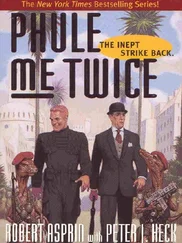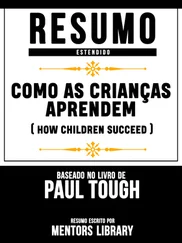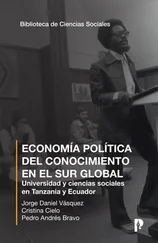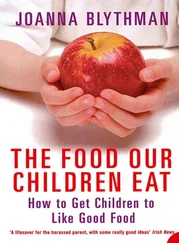New York Times Magazine
NLSY. See National Longitudianl Survey of Youth (NLSY)
No Child Left Behind law
“noncognitive academic skills”
noncognitive skills. See also character strengths; conscientiousness; grit; self-control
achievement gap and,
dropping out and,
OneGoal leadership principles and,
success and, xix–xxi,
North Star Academy in Newark
Obama, Barack (U.S. president)
Oettingen, Gabrielle
O’Keeffe Elementary School in Chicago
OneGoal program. See also Lerma, Kewauna
openness to experience
optimal experiences
optimism
Ounce of Prevention Fund
Outliers (Gladwell)
overprotection,
Pankonien, Dawn
parenting
adolescent outcomes and,
attachment relationships and,
chess genius and,
cognitive hypothesis and,
economic case and,
infant stress management and,
interventions and,
LG effect and,
overindulgence and,
“performance character”
Perry Preschool Project, xix–xxi
persistence. See also grit
personality. See also character; confidence; conscientiousness; grit; self-control
dimensions of,
incentives and,
pessimism,
Peterson, Christopher
“play plans”
Polgar, Laszlo
politics
character-education initiatives and,
of disadvantage,
Popper, Sir Karl
positive psychology
poverty in childhood. See also childhood trauma; family functioning
cognitive abilities and,
deeply disadvantaged and,
health disparities and,
politics and,
public policy debate and,
rate of,
school reform in Chicago and,
practice, and success
prediction of success. See also cognitive hypothesis
achievement tests and,
attachment relationships and,
conscientiousness and,
GED study and,
Grit Scale and,
high school GPA and,
self-control and,
prefrontal cortex. See also executive functions; self-control
interventions and,
self-regulation and,
The Price of Privilege (Levine),
Prilleltensky, Matan
“private speech”
privileged students. See also elite schools; Riverdale Country School
career choices and,
disadvantages of,
grit and,
overprotection and,
productivity, sense of
Psychological Science (journal),
public health system
public opinion
public policy. See education reform; government policies
public school systems
Chicago reform initiatives and,
The Race Between Education and Technology (Goldin & Katz)
Race to Nowhere (film)
Randolph, Dominic,
character evaluation and,
as Riverdale headmaster,
Real Education (Murray)
Red Bank Primary School in New Jersey
Reed, Lanita
Risley, Todd R.
Riverdale Country School
alumni from,
character and,
discipline at,
influence of affluence and,
social safety net at,
Roberto Clemente Middle School
Roberts, Brent,
Robert Taylor Homes housing project
Roderick, Melissa
Roseland neighborhood, Chicago
Rowson, Jonathan
Roxbury Prep in Boston
Rug Rat Race,
rules, and character
Sanders, William
Sapolsky, Robert
Savage Inequalities (Kozol)
Schamberg, Michelle
Schooling in Capitalist America (Bowles & Gintis)
school-lunch subsidy
science of adversity
secure attachment relationships
Seeman, Teresa
Segal, Carmit
self-control. See also executive functions; prefrontal cortex
adolescence and,
compulsiveness and,
conscientiousness and,
factors affecting,
grit and,
KIPP students and,
marshmallow test and,
Philadelphia study on,
prediction of success and,
Riverdale students and,
strategies for,
stressful childhoods and,
Tools of the Mind program and, xi–xii
Seligman, Martin
The Seven Deadly Chess Sins (Rowson)
sexual assault. See also childhood trauma
Shonkoff, Jack
Simon test
SLANT, at KIPP
Smith, Gene
Spiegel, Elizabeth
chess coaching and,
passion about chess,
self-reflections,
teaching style and,
Sroufe, Alan
Stabrowski, Sayuri
standardized college admissions tests
college success and,
OneGoal program and,
Stanford University
Steele, Claude
Stefl, Michele
Steinberg, Laurence
stereotype threat
Stewart-Montgomery, Anita
Strange Situation
“strength of character” rating
stress. See also ACE scores; childhood trauma
developmental effects of,
executive function and,
responses to different types of,
as risk indicator,
stress-response system
Stroop test
success, types of. See also prediction of success
suicide, and childhood trauma,
Sullivan, Monisha (student)
Sweating the Small Stuff (Whitman),
Swindell, Shawn (student),
teachers
chess coaching and,
growth mindset and,
needs of adolescents and,
OneGoal programs and,
quality of, and reform efforts,
Teach for America
There Are No Children Here (Kotlowitz)
thinking habits, and chess
Tools of the Mind program, xi–xii
toy-car incident
Turnaround for Children
undermatching
unfulfilled potential
Urban Students Empowered Foundation. See also OneGoal program
Vallas, Paul
Vance, Tyrell (KIPP student)
Vidale, Dwight
violence, threat of. See also childhood trauma
virtues
Vivian E. Summers Alternative High School in Chicago
wanting vs. choosing
War on Poverty
Wason, Peter Cathcart
Waters, Everett
Wechsler, Nick
Whitman, David
Why Zebras Don’t Get Ulcers (Sapolsky)
Williams, Justus (IS 318 student)
willpower. See also grit
WINGS class
Witter, Mike
working memory
worry
Wozniak, Steve
Youth Advocate Programs (YAP). See also Jones, Keitha
Ypsilanti, Michigan. See Perry Preschool Project
Sample Chapter from WHATEVER IT TAKES
BY THE TIME Geoffrey Canada arrived at the Promise Academy lottery, the auditorium was almost full. He had expected a modest turnout—he figured the rain would keep a lot of parents away—but by 6:00P.M. more than two hundred people had crowded into the back of the hall, and there were dozens more still streaming in the front door. Here and there, members of Canada’s staff were consulting clipboards and calming anxious parents. His director of education hurried past him, shouting into her cell phone. It was April 14, 2004, a cool, wet night in Harlem. The hand-lettered sign out front of PS 242, streaked with raindrops, said “Welcome to the Promise Academy Charter School Lottery,” and inside, past the sign-in table set up in the school’s front hallway, a tall, bull-chested young man named Jeff was handing a rose to each woman as she walked in. “These are for the moms,” he said with a smile. “Welcome to the ceremony.”
Canada, a tall, thin black man in a dark blue suit, surveyed the crowd. From what he could see, the parents taking their seats in the auditorium were the ones he had hoped to attract: typical Harlem residents, mostly African American, some Hispanic, almost all poor or working class, all struggling to one degree or another with the challenges of raising and educating children in one of New York City’s most impoverished neighborhoods. In many ways, their sons and daughters were growing up the way Canada had, four decades before, just a few miles away in the South Bronx: cut off from the American mainstream, their futures constrained by substandard schools, unstable families, and a segregated city.
Читать дальше




![Коринн МакКей - How to Succeed as a Freelance Translator [calibre 3.46.0]](/books/402693/korinn-makkej-how-to-succeed-as-a-freelance-transl-thumb.webp)








